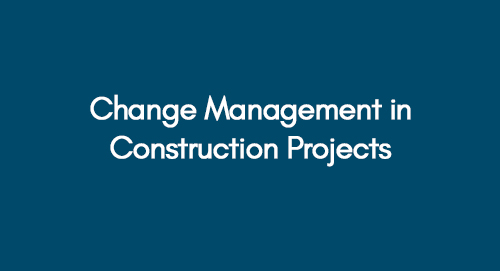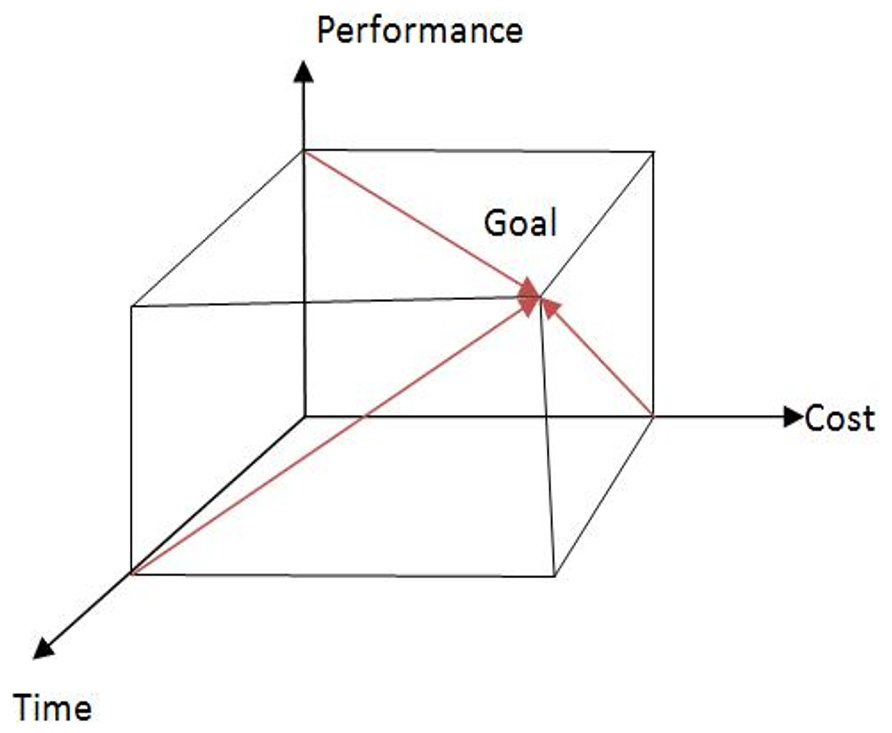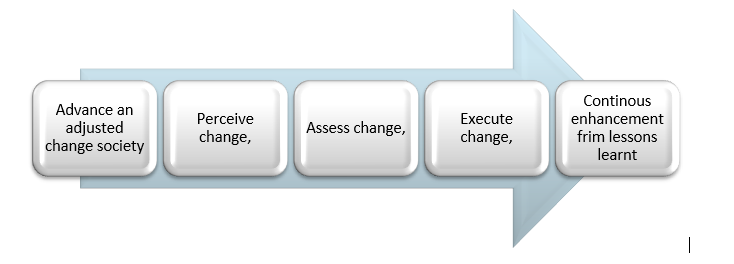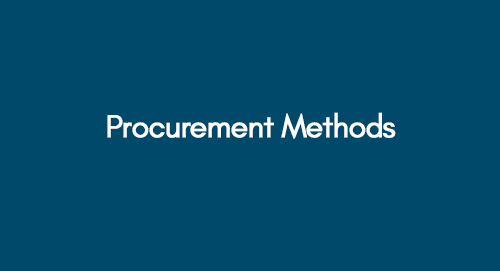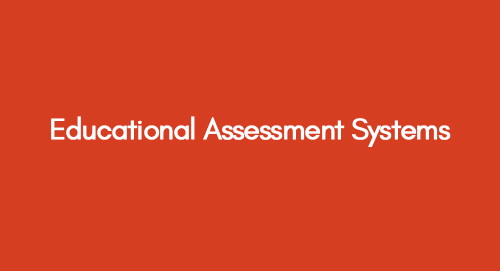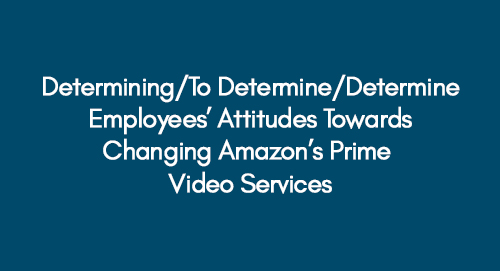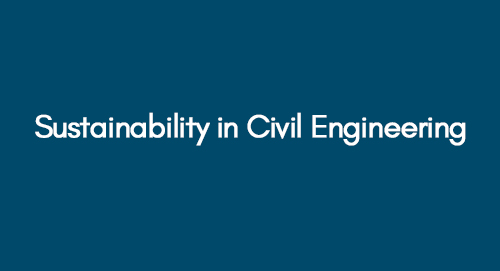
Building a Greener Tomorrow: Sustainability in Civil Engineering
December 19, 2020
Economics
December 19, 2020In the realm of project management dissertation topics, 'change' signifies adjustments, modifications, or the act of creating differences, as defined by the Concise Oxford Dictionary. Change management plays a central role in construction projects, addressing the disruptions stemming from client revisions, design alterations, material updates, and human resource challenges.
Learn More About Change Management
Explore More About Construction Projects
This paper delves into the intricacies of change management within construction projects, offering valuable recommendations to stakeholders at Caledonian LLC, a construction company grappling with dynamic project environments. It explores the complexities of managing change, considering client-driven alterations, design modifications, evolving material needs, and the nuances of efficient human resource management in the construction industry.
Projects in Construction
A construction project is a brief and purposeful undertaking initiated to create a unique product, service, or outcome (PMI, 2008). Such projects are typically designed to achieve a specific and well-defined goal, characterized by a finite timeline and a non-repetitive sequence of events (Atkinson 1999). Any project can be defined through its objectives/goals, performance expectations, cost and the allocated timeline, as illustrated in the figure below
Figure 1: Key parameters associated with a construction project (Source: Atkinson, 1999)
The introduction towards giving due contemplation to project members and partners is key to acquiring accomplishment from the project (Müller & Turner, 2010). Construction-based projects can either be named "one-of-a-kind" in terms of manufacturing or "unreliable" activities (Atkinson 1999). According to CII (1994), there are some basic issues a construction project faces that are totally different from other industrial projects, and which results in the need for modifications and revisions to the original plans;
- Construction projects include numerous stakeholders/teams such as the owners, consultants, designers, constructors, architects, etc.
- The development supply chains are transitory and are based on a particular project.
- Different systems for product delivery are implied, with distinctive styles of project management and costing frameworks being employed. For example, "traditional" (PMA 2008), "management construction" (CII 1994), and "design-build" contracts all employ different techniques of construction and project developments, risk allocations and project costs.
- One-of-a-kind needs to deal with the included lawful contracts and other related records (for instance, change orders)
- Various issues arise at the time of execution of the plans and also in the later phases of construction, which need to be addressed in real time. These unforeseen revisions can cause disputes regarding the original contracts.
Change Management in Construction Projects
In light of the high likelihood of changes occurring in construction projects, it is imperative to investigate the impacts and outcomes of these changes on the teams involved. To accommodate and oversee these changes, alterations to construction activities need to be meticulously planned and executed to ensure that project deliverables remain intact (Lazarus & Clifton, 2001; Cao et al., 2004). Chipulu et al. (2014) argue that project environments are marked by complexity and uncertainty, posing challenges in identifying factors contributing to project success or failure. Kandelousi et al. (2011) and Haughey (2010) further assert that the success or failure of projects is often attributed to factors such as the type of management, project requirements, management practices, or inadequate scope management. However, these analyses frequently overlook the social and human dimensions of project execution.
In the context of mental health dissertation ideas, it's essential to acknowledge that changes and modifications are inherent in construction projects across all phases of development. These changes are often unavoidable and frequent, underscoring the necessity for meticulous consideration in the formulation of construction contracts and procurement management planning. Sun et al. (2004) cited a report from the EPSRC in the UK, revealing that approximately one-third of clients express dissatisfaction with construction projects, primarily due to delays and budget overruns. Neelamkavil et al. (2008) discovered that client dissatisfaction is frequently linked to change requests during project development. Simultaneously, managing these change requests can significantly impact mental health within the construction industry. Conversely, negative changes in project development can lead to substantial issues and disputes among all project stakeholders.
The complexities of construction management, as highlighted by Motawa et al. (2007), become evident when exploring topics in engineering management research. These challenges are prevalent at both the organizational and project levels. Notably, development-related tasks often experience numerous changes, with design modifications being particularly common, especially in the early project phases. This paper offers a comprehensive analysis of the repercussions of these changes on project management. Sun et al. (2006) further contribute to this discourse by underlining that project changes can arise, even following extensive research conducted during the design development phase, often influenced by the dynamics of the development stage. Erdogan et al. (2005) emphasize that effective project management lies in the ability to adapt to the evolving landscape of construction activities at the project level and efficiently implement change. In addition to managing changes at the project level, construction organizations may find themselves in a position where they must implement organizational-level changes as well.
How to Handle Changes in Construction Projects
Within the scope of topics for the dissertation, Lazarus and Clifton (2001) suggest an intriguing avenue for exploration by delving into the realm of change impacts during project progression. They identify two specific types of impacts, direct and indirect, both of which play a pivotal role in understanding the dynamics of projects. Direct impacts take centre stage, as they are more immediately noticeable than their indirect counterparts. These direct impacts encompass various aspects that are pertinent for dissertation topics, including the need for comprehensive work/activity audits, updates to crucial data such as quantity surveying and materials analyses, effective communication of revisions to other project teams, the allocation of additional time and resources to bring changes to fruition, the redesign and planning of work systems, updates to activity schedules and deliveries, revisions to contractual agreements, and the reevaluation of risk analyses and mitigation plans, among other critical considerations.
The indirect impacts comprise an increased probability of management failures and blunders, expanded wastage in the process from unsuccessful work, lack of team efforts, nature of the item and benefit, reduced profitability, and vulnerability failure to meet the objectives of the projects due to lack of project management. A large portion of the literature review provides guidance, standard operating practices and rules about the way to oversee/avoid such changes. The following are the standards of the powerful CM model developed by CII (1994):
Figure 2: the model to manage changes (Source: CII, 1994)
Given these standards, this model and the calculation are likewise distributed by Ibbs et al. (2001). Also, Lazarus& Clifton (2001) reviewed these standards and algorithms and proposed separate change management (CM) methods for changes amid design improvement, serious post-fixity changes and non-critical post-fixity changes.
More recent research on change management and construction dependency was funded by The EPSRC, which has established a toolkit that empowers clients to deliver a rich portrayal of the change occasion. According to EPSRC (2005), the toolkit blends alter the CM and prediction with the idea of information organization and workflow method. In this context, Love et al. (2002) examine the research in the area of CM through a framework elements point of view and propose that the progress of a project system should be assessed and supervised by the project supervisor/manager as per the accompanying capacities.
Figure 3: Project Change Management. Sources: Adapted from Love et al. (2002)
Moreover, the role of technology in change management is also highly significant. To remove the discrepancies between the clients and construction companies, proper adjustments and design enhancements are effective in supporting management decisions. The study of Faniran et al. 2001 and Lau et al. (2003) indicates that Simultaneous designing planning and manufacturing methodologies are accepted to be more effective in reducing the total changes in design or managing these changes during the stage of development as long as the group have a well-structured system for communication and interest in the client needs. In another study by Issac and Navon (2008), a change control tool (CCT) was proposed to improve the tracking of design changes and to increase the link between clients and the design of projects. In this study, Issac and Navon (2008) concluded that changes can be controlled if clients’ requirements are tackled at the right time. Also, to enhance the correspondence system and handle changes rapidly, many other methodologies in literature tend towards the practices of leading organizations. However, from the literature reviewed, it was observed that the design process needs more consideration since many project changes are due to design changes. Hence, the configuration procedure requires more consideration.
Impact of Leadership and Culture
As per Kouzes and Posner (2007), research on Leadership has concentrated seriously on interpersonal capacities, for example, indicating mindfulness, imparting, understanding, and keeping up great relations with others, which are pivotal factors when managing multiple teams such as in construction projects. According to the study by Turner and Lloyd-Walker (2008), these relationship qualities incorporate extensive communication, monitoring, significant dialogue, ready-to-start discussion, and imparting and managing misconceptions, which can significantly reduce the impact of changes in projects (Pless and Maak, 2008).
Within the context of LLM dissertation examples, the research conducted by Prabhakar (2006) and Prabhakar and Walker (2005) illustrates the unique challenges of leadership in project management, distinct from operational leadership. Their studies, encompassing international projects, highlight the necessity for project leaders to continuously adapt their leadership style to match the evolving demands of different project stages, a concept known as switch management. Walker and Prabhakar (2006) further underscore the significant challenge of leading multicultural teams, with the project leader's decision-making role paramount. Their research, involving projects in numerous countries, emphasizes the importance of selecting the 'right' Project Leader. This selection process can effectively address various project management issues by leveraging emotional intelligence, diversity management, and strong interpersonal skills to connect empathetically with individuals of diverse capabilities, ultimately resolving challenges in project supervision (Turner and Lloyd-Walker, 2008).
The project can also be impacted by culture directly; for instance, social contrasts can build group heterogeneity because of globalization because every individual brings their philosophies, convictions and states of mind that whether good leaders lead to heterogeneous groups performing superior to anything homogeneous ones (Müller, R., &Jugdev, K. (2012). In another study, Miller et al. (2000) suggested that groups are more imaginative and innovative in diverse projects because of numerous perspectives that incredibly enhance how the project is delivered. The most critical result of this information is that social components were neglected as one critical operator that can frame impact on achievement or disappointment in the project (Ramos and Mota, 2015). This partially clarifies why correspondence has been considered a determinant component since correspondence is connected to how an association cooperates and how the culture of the organization of an organization is set up.
Role of Conflict Management
As discussed previously, there can be potential contrasts in a project that includes planning, administrative and authoritative techniques, correspondence, setting objectives, asset assignment, system of reward, identities, cost, specialized information, legislative issues, leadership style and vicinity of equivocalness (Kezsbom 1992). The work of Blake and Mouton is a significant part of which the research for project management has been conducted. They distinguished five primary refereeing methodologies, particularly critical thinking and withdrawal, process optimizations, driving, and sharing. Researchers have used this as a basis system with unpretentious changes to wordings, for example, the Kilmann (2007) model, which depends on five methods of managing conflict: contending, working together, compromising, avoiding, collaborating, and accommodating.
Recommendations to Caledonian LLC
Based on the above discussion, the following strategies are recommended for better project management at Caledonian LLC.
- Although assessing and foreseeing the changes in construction projects is difficult, the company must more accurately analyze the project's requirements. For this purpose, they may consider using computer-aided systems such as BIM, which is well known to reduce conflicts arising in construction projects amongst different teams due to accurate processing in methods in almost all activities of the projects. Such systems have proven capability in efficient and effective change management, as these allow for real-time updates in designs, data updates, cost analyses, risk analyses, presentation of 3D models, live updates in the activity completion, auto-generated BOQs, quantity surveying, etc.
- Incorporating a thesis plagiarism checker is essential for maintaining academic integrity, and it's equally crucial for companies to adopt a pricing strategy that accounts for high-risk projects, particularly those susceptible to future modifications. By considering the inherent risks, companies can make informed pricing decisions. The willingness to assume these risks can be balanced through financial incentives, ultimately contributing to conflict reduction and a more sustainable project management approach.
- Utilization of the optimum project management procurement techniques must be more thoughtfully evaluated while considering the change management issues. For instance, a tailored construction contract with the most suited procurement strategy can befit in change management in construction projects undertaken by Caledonian LLC.
- As a result of the diverse change management issues, employing a multicultural project group is proposed to address several sources of conflict to a considerably more prominent degree. In this manner, the multicultural project leader can enhance the company’s capacity to handle contentions successfully, considering the goal of optimising the group's project execution abilities.
- The Company can use Kilmann’s conflict management styles of collaborating and accommodating their clients rather than avoiding or competing in their projects. Also, compromising on the essential requirements and standards will create severe consequences in future; therefore, the company has to negotiate with clients on requirements before making any radical change.
- The impact of leadership is very important at all levels of project management in the construction sector. Therefore, the company needs to cultivate leadership behaviours and styles in management to tackle difficult situations faced due to the interference of clients. More convincing participative leadership styles will suit the company during difficult changes.
References
Atkinson, R. (1999). Project management: cost, time and quality, two best guesses and a phenomenon, it’s time to accept other success criteria. International Journal of Project Management, 17(6), 337-342. http://dx.doi.org/10.1016/ S0263-7863(98)00069-6.
Construction Industry Institute (CII) (1994) Changes in project Management, Special Pub. 43-1Concise Oxford Dictionary (1990) 8ed. Ed R.E., Alien
Cao, G, Clarke, S, Lehaney, B (2004) The Need for a Systematic Approach to Change Management- A Case Study, Systemic Practice and Action Research, 17(2), 103-26
Chipulu, M., Ojiako, U., Gardiner, P., Williams, T., Mota, C., Maguire, S., Shou, Y., Stamati, T., & Marshall, A. (2014). Exploring the impact of cultural values on project performance: The effects of cultural values, age and gender on the perceived importance of project success/failure factors. International Journal of Operations & Production Management, 34(3), 364-389. http://dx.doi.org/10.1108/IJOPM-04-2012-0156.
Erdogan, B., Anumba, C, Bouchlaghem, D. and Nielsen, Y. (2005) Change management in construction: the current context. In: Khosrowshahi, F (Ed.), 21st Annual ARCOM Conference, 7-9 September 2005,
EPSRC- Engineering and Physical Sciences Research Council Industrial Report(2005)Managing Changes in Construction Projects
Faniran, O O, Love, P E D, Treloar, G, Anumba, C J (2001) Methodological issues in design construction integration, Logistics Info Management, 14(5/6), 421-6
Hofstede, G. (1980). Motivation, leadership, and organization: do American theories apply abroad? Organizational Dynamics, 9, 42-63. http://dx.doi.org/10.1016/0090-2616(80)90013-3.
Hofstede, G. (2001). Culture’s consequences: comparing values, behaviours, institutions, and organizations across nations (2nd ed.). Thousand Oaks: Sage Publications
Hao, Q., Shen, W. (2007). “Collaborative Workflow Technology for Design and Manufacturing Coordination”. Proc. ASME MSEC 2007, Atlanta, GA.
Isaac, S., Navon, R. (2008). “Feasibility study of an automated tool for identifying the implications of changes in construction projects”. Journal of Construction Engineering and Management, 134(2)139-145.
Kezsbom, D.S. (1992). Re-opening Pandora’s Box: sources of project conflict in the ’90s, Industrial Engineering, 24 (5), 54-59.
Kilmann, R.H. (2007). Thomas-Kilmann Conflict Mode Instrument. [Online] Available: http://www.kilmann.com/conflict.html (Nov 20th, 2015)
Kandelousi, N. Sh., Ooi, J., &Abdollahi, A. (2011). Key success factors for managing projects. World Academy of Science, Engineering and Technology, 5, 11-24.
Lau, H Y K, Mak, K L, Lu, M T H (2003) A virtual design platform for interactive product design and visualization, Journal of Materials Processing Technology, 139, 402-7
Muhammad, U., Prabhakar, G.P., and Walker, S.E. (2008). Intercultural Team Maturity Model: Unity, Diversity, Capability. ProjectPerspectives, 70-73.
Motawa, I.A., Anumba, C.J., Lee, S., Peña-Mora, F. (2007). “An integrated system for change management in construction”. Automation in Construction, 16(3)368-377.
Miller, M. D., Fields, R., Kumar, A., & Ortiz, R. (2000). Leadership and Organizational Vision In Managing a Multiethnic and Multicultural Project Team. Journal of Management Engineering, 16(6), 18-22. http://dx.doi.org/10.1061/ (ASCE)0742-597X(2000)16:6(18).
Müller, R., &Jugdev, K. (2012). Critical success factors in projects, Pinto, Slevin, and Prescott: the elucidation of project success. International Journal of Project Management, 5(4), 757-775. http://dx.doi.org/10.1108/17538371211269040.
Müller, R., & Turner, R. (2010). Leadership competency profiles of successful project managers. International Journal of Project Management, 28(5), 433-448. http://dx.doi. org/10.1016/j.ijproman.2009.09.003.
Neelamkavil, J., Shen, W., Fung, D., Hao, Q., Xie, H. (2008). Need for an intelligent system for construction process automation. IRC Technical Report, March 2008.
Prabhakar, G.P. (2004b). Switch Leadership. Pre-IRNOP Doctoral Conference at Helsinki University of Technology, Helsinki, Finland
Prabhakar, G.P. (2005a). Switch Leadership in Projects. Project Management Journal, 36 (2), 53-60.
Project Management Institute - PMI. (2008). A guide to the Project Management Body of Knowledge: PMBOK. (4th ed). Pennsylvania.
RAMOS, Pamela AdelinoandMOTA, Caroline Maria de Miranda. 2015, Exploratory study regarding how cultural perspectives can influence the perceptions of project success in Brazilian companies. Prod. [online], pp. 0-0.Epub Oct 27,. ISSN 1980-5411.
Rollag, K. (2005). Managing Conflict on Project Teams. Web-based interactive “toolkit” that focuses on the different conflict-handling styles students use to resolve conflict and gives advice on how to resolve conflict and tension in teams. [Online] Available: http://faculty.babson.edu/krollag/personal/resume.html (February 18th, 2008)
Samarah, I., Paul, S. &Mykytyn P. (2002). Exploring the links between cultural diversity, the collaborative conflict management style, and the performance of global virtual teams. Eighth Americas Conference on Information Systems, Southern Illinois University at Carbondale. Slevin, D. P., & Pinto, J. (2004). An overview of behavioural issues in project management. In P. W. G. Morris andJ. K. Pinto (Eds), The Wiley guide to managing projects. Hoboken, NJ: John Wiley & Sons.
Sun, M., Senaratne, S., Fleming, A., Motowa, I., Yeoh, M.L. (2006). “A change management toolkit for construction projects”. Architectural Engineering and Design Management, 2(4)261-271.
Sun, M., Sexton, M., Aouad, G., Fleming, A., Senaratne, S., Anumba, C., et al. (2004) Anaging Changes in Construction Projects. (available at: http://www.builtenvironment.uwe.ac.uk/research/cprc/publications/mcd.pdf).
Walker, S.E. &Prabhakar, G.P. (2006). Intercultural Team Maturity Model: Unity, Diversity, Capability. ProjectPerspectives, 28, 70-73.
Turner, J., & Muller, R. (2005). The project manager’s leadership style as a project success factor: A literature review. Project Management Journal, 36(2), 49-61.
Turner, R., & Lloyd-Walker, B. (2008). Emotional Intelligence (EI) capabilities training: Can it develop EI in project teams? International Journal of Managing Projects in Business, 1(4), 512-534.
Project Management Institute. (2008). A guide to project management body of knowledge (4th ed.). PMBOK Guide. Newtown Square PA: PMI Publications.
Pless, N., &Maak, T. (2008, March). Business-in-Society Competence for Leading Responsibly in a Global Environment. INSEAD Working Papers Collection, Retrieved Jan 4, 2009, from Business Source Complete database.
Kouzes, J. M., & Posner, B. Z. (2007). The Leadership Challenge. (4th. ed.) San Francisco, CA. Wiley.
Get 3+ Free Dissertation Topics within 24 hours?




